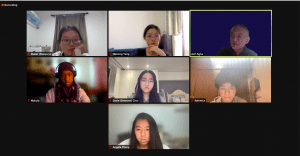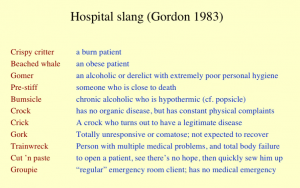
For the 3rd and 4th Pioneer group sessions, we conducted two small analysis on the materials we’ve read, specifically on communication in culture and Japanese women’s language. While the linguistic features such as registers, lexicon and discourse all seemed too obscure to me at first, I have become more specialized in my field of research, and understood the correlations between communication, language, culture and society better (LO2: Demonstrate that challenges have been undertaken, developing new skills in the process).
For instance, the case study I decided to look at was the Japanese women’s language / schoolgirl’s speech, which was a language reform in the late 19s century propelled by the process of Westernization and the Meiji restoration. The function of it is greatly associated with the society’s perception of what women “should speak”.

In Sanshiro written by Natsume Soseki in 1909, he inevitably distinguished male-exclusive and female-exclusive final particles attached to the verb “da”, which appeared gender neutral and idiosyncratic in Ukiyoburo written in 1813. For example, “da-wa” and “no-yo” were not assigned to the elite female characters at all in Sanshiro, as they carried the sense of vulgarity which educators advised girls to not use.
By normalizing a specific set of refined vocabularies and staged features, the government successfully differentiated female and male demeanors, roles and status. While the proponents of the women’s language expected Japanese females to have a sincere attitude towards the preferred femininity to preserve the cultural system, the opponents believed that it represents a biased reform where women are being standardized, objectified and evaluated. Personally, I felt the need to discussing this issue because it is associated with social inequality and prejudice regarding women, and there’s more to come with an unexpected turn – Nowadays, as women empowerment became more and more prevalent, the victims of the women’s language started to rebel and call for reform. The speech is becoming a resource of their identity which they could use whenever they wish, rather than a corrupted norm. An example of the women’s independence was the free usage of women’s language in Lollita culture, which is a Japanese youth subculture that focuses on antique aesthetics. I was able to elaborate on this issue and score high because I felt the need to discussing feminism. The women’s speech was a perfect linguistic model to be analyzed, to learn about the post-war social systems, and the contemporary female empowerment. (LO6: Demonstrate engagement with issues of global significance)

Hospital slang in 1983 that is used exclusively in the community of doctors towards patients, this is an instance of slang and its imagined community.
In the 5th group session, we focused on the nature, function and usage of slang words in the contemporary culture. The set of vocabulary exists in nowadays youth culture, resembling the women’s speech in Lollita practices. The origin of slang remains unknown, and its social and psychological complexities make it very difficult to define. During the class we studied the nuance of some of the terms in a cultural and social context – for instance, slang items sometimes show generalization. When saying “get a job”, it is a command to act mature; while when saying “homeboy”, it is to refer to a sense of closure and relationship. But perhaps the best example is the word “dude” that meant “a man dressed in a fastidious way” in 1880s American English and changed to “a black man who dressed flamboyantly” by the stereotypical use of that term y black entertainers in the 1980s, then to the generalized meaning of all genders and age by Bart Simpson in the 1990s. Slang is seen as an in group vocabulary that characterizes an “imagined community”, a word developed by Benedict Anderson. Understanding the usage of slang adds to my analysis of inter-personal interactions as well as gain a more comprehensive view of certain communities/ groups. It’s hard to have an unbiased anticipation of categories, and I think learning about the complexity of slang usage can help me improve my ways of perception as well as my empathy to a greater level.
(Lo1: Identify own strengths and develop areas for growth)
For the individual research to come, I’ve decided to focus on a comparative analysis of Sinhalese and Tamil people in Sri Lanka, specifically on their culture, linguistic features and conflicts. Not only does this represent my appreciation of the culture I’m localized in, but it also shows one of the approaches in which my knowledge contributes to a broader scale of global issue.